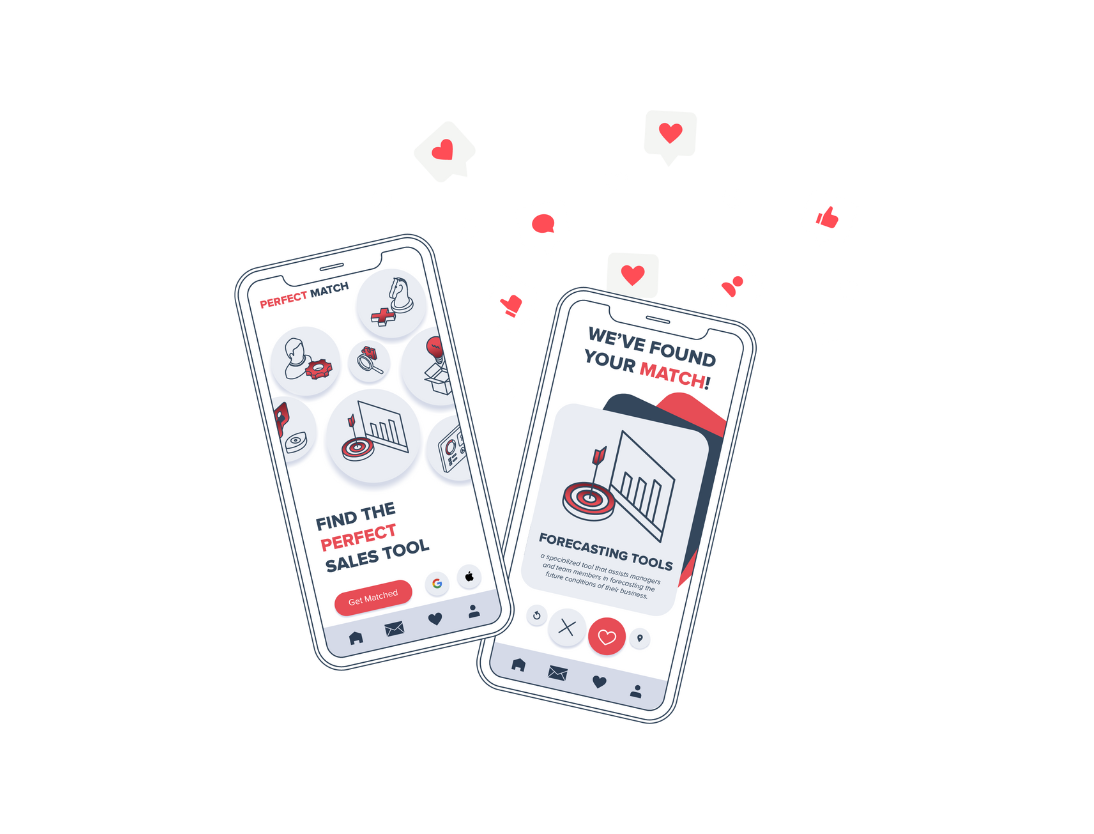This blog post dives into nine essential strategies to optimise your sales process, emphasising user acceptance to fully harness the power of new sales technologies and methodologies.
In today's cutthroat business world, mastering a smart, robust sales process is more crucial than ever—it's not just about selling more but selling smarter.
However, the key lies in continuous sales process optimisation. By enhancing efficiency, boosting productivity, and achieving higher conversion rates, a fine-tuned sales process can significantly elevate customer experience and loyalty.
Leveraging data-driven strategies allows for agile adaptation to market changes, aligns sales with marketing efforts, and cuts down operational costs.
However, a critical factor often missed is user acceptance. Up to 90% of new CRM projects fail, not due to the technology itself but due to reasons including a lack of user adoption.
Simplifying the process, ensuring easy access to necessary information, and clearly communicating the benefits to your salespeople are essential for effective implementation.
1. Visualise your sales process
The first step in optimising your sales process is to document it visually.
Why? Because visualisation helps in identifying bottlenecks, streamlining operations, and ensuring everyone on the team understands the workflow.
Here's how you can benefit from it:
- Identifying bottlenecks: Easily spot areas where prospects get stuck and identify areas that need improvement or optimisation.
- Efficient onboarding: New sales reps can understand the process quicker.
- CRM alignment: Align your CRM system with your sales process for consistency.
- Improved continuity: Ensures consistency in sales approach, regardless of personnel changes.
- Streamlined marketing and service team alignment: Indicates the exact points of handoff & responsibility and creates a unified approach towards customer acquisition and retention.
Start by mapping out each step of your current sales process, from initial contact to closing the deal. Use flowcharts or diagrams to represent different stages and actions.
This visual representation will serve as a guide for your team and a tool for continuous improvement.
2. Implement lead scoring
Lead scoring is a methodology used to rank prospects against a scale that represents the perceived value each lead represents to the organisation.
You can score your leads based on multiple attributes, including the professional information they've submitted to you and how they've engaged with your website and brand across the internet.
Implementing lead scoring can help your sales team focus on high-potential prospects, increasing efficiency and conversion rates. Here's why lead scoring is crucial:
- Better prioritisation: Focus on leads that are more likely to convert.
- Increased efficiency: Sales reps spend time on leads with the highest potential.
- Improved customer targeting: Tailor your approach to the specific needs and potential of each lead.
To start with lead scoring, define the criteria that matter to your business - demographic information, online behaviour, engagement level, etc.
Assign points to each criterion based on its importance.
For example, filling out a “Contact Us” form, carries more points than downloading a product brochure.
Assign negative points for actions that make them less qualified, such as unsubscribing from a newsletter or cancelling a meeting & not rebooking.
Once a lead reaches a certain predefined threshold, it will be considered a qualified lead for your organisation. Your team can then engage them & qualify their readiness to buy.
Once a buying opportunity exists, you can again use the above method to score a deal (sales opportunity) to determine the deal’s probability of closing, helping your team prioritise their efforts.
3. Automate your processes
Automation is not about replacing your sales team; it's about enabling them to do more with their time.
Research shows that only 36.6% of a salesperson’s time is actually used to sell, with the rest allocated to administrative tasks.
By automating routine tasks, your sales team can focus on more complex aspects of the sales process, like building relationships and closing deals.
Here are some areas where sales enablement tools can help:
- Lead qualification: Automatically scoring and assigning leads.
- Email campaigns: Sending out regular, personalised email communications.
- Appointment scheduling: Streamlining the process of scheduling meetings with leads and clients, reducing back-and-forth communication.
- Data entry: Reducing manual data entry by integrating systems.
- Follow-ups: Scheduling automated reminders for follow-ups.
Identify the repetitive tasks that consume most of your sales team's time and explore tools that can automate these processes.
CRM systems often come with automation capabilities, or you can integrate specialised automation tools.
4. Master upselling and cross-selling
Upselling and cross-selling are powerful tactics to increase your revenue per customer.
These strategies involve encouraging customers to purchase higher-end products (upselling) or additional products (cross-selling) related to their initial purchase.
Here's how they can be beneficial:
- Increased average order value: Encourages customers to purchase more or higher-value items.
- Enhanced customer experience: By offering relevant additions or upgrades, you provide more value to your customers.
- Better customer retention: Customers who see the value in multiple offerings are more likely to return.
To implement upselling & cross-selling strategies your team needs to:
- Understand customer behaviour: Analyse existing customer data to identify patterns, preferences, and purchasing behaviour. Determine which products/services complement each other or are often purchased together.
- Define target opportunities: Identify key moments or touchpoints in the customer journey where cross-selling or upselling opportunities naturally arise. This could be during initial purchases, post-purchase interactions, or when customers reach certain milestones.
- Develop personalised offers: Create tailored offers or bundles based on customer segments, preferences, and past buying behaviour. These offers should add value and address specific customer needs or pain points.
To successfully implement these strategies, your sales team must understand your product range thoroughly and identify opportunities for an upgrade or an additional product to benefit the customer. Training and product knowledge are key here.
5. Improve sales forecast accuracy
Accurate sales forecasting is more than just predicting future sales; it's about making informed business decisions based on reliable and specific data.
Emphasising quantitative sales forecasting can significantly enhance this accuracy. Quantitative sales forecasting involves using numerical data and statistical methods to predict future sales, providing a more objective basis for forecasts.
The accuracy of a sales forecast significantly improves when an opportunity is in the correct stage in real time. This increased reliability and specificity of information at each stage provides several benefits:
- Timeliness of data: Ensuring that the opportunity is in the correct stage in real time means the information about the prospect or customer's intent, interest, and engagement is current and up-to-date. This timeliness is crucial for accurate forecasting.
- Clarity on progress: Knowing the precise stage of an opportunity helps forecasters understand the progress made and the likelihood of successfully moving the opportunity through the pipeline. This clarity is essential for making informed decisions.
- More accurate predictions: As an opportunity progresses through stages, it provides more specific and detailed data points. This increased granularity allows sales teams to make more accurate predictions about the probability of a successful sale.
- Decision-making and resource allocation: Real-time visibility into the right stage of an opportunity enables better decision-making. It helps sales managers allocate resources effectively, prioritise deals, and adjust strategies based on the current state of each opportunity.
How do you ensure that opportunities move through the stages of the sales process accurately?
- Segmentation: Segment opportunities based on their potential value, urgency, or other relevant criteria. Prioritise high-value opportunities and allocate resources accordingly to ensure they receive adequate attention and move swiftly through the pipeline.
- Implement sales cadences: Develop structured sales cadences and follow-up plans to maintain consistent communication with prospects.
- Set clear expectations: Define KPIs and hold team members accountable for meeting these targets.
- Regular reviews: Conduct regular pipeline reviews and feedback sessions with sales teams. Provide constructive feedback, share best practices, and identify areas for improvement to optimise the movement of opportunities through the pipeline.
Remember, accurate forecasting is not just about predicting sales; it's about understanding your sales pipeline's health and making strategic decisions based on this insight.
HubSpot sales forecasting is a key tool in achieving this understanding.
6. Adopt sales methodologies and handle objections
A lack of proper sales methodology and objection-handling guidance can significantly impact the sales process.
Without a structured approach, sales representatives may struggle with inconsistent interactions, find it difficult to address customer concerns effectively, and ultimately face missed opportunities and decreased sales performance.
To counter this, it's essential to implement or review your sales methodologies, keeping several key factors in mind:
- Clarity and consistency: Provide clear, step-by-step guidance on the sales process, covering all stages from prospecting and qualification to presentation and closing. This clarity helps sales reps understand the expected approach and maintain consistency in their interactions. A comprehensive sales playbook can serve as a vital resource in this regard, outlining the standard procedures and strategies for your sales team.
- Adaptability and flexibility: While maintaining a structured approach, allow flexibility to adapt to diverse customer needs and situations. The methodology should accommodate different scenarios and sales approaches, ensuring responsiveness to various customer demands.
- Training and support: Regular and comprehensive training sessions are crucial. Ongoing support ensures that sales reps not only understand but can effectively implement the methodology in their daily interactions.
- Continuous improvement: Encourage feedback from sales representatives regarding the effectiveness of the methodology. Regularly review and refine the guidelines based on real-time experiences and evolving market dynamics to ensure continuous improvement.
- Integration with technology and tools: Ensure that the sales methodology aligns with the technology and tools used by the team. This integration enhances efficiency and effectiveness in the sales process.
- Metrics and performance measurement: Define KPIs aligned with the methodology. These sales metrics should be used to track and measure sales performance, providing insights for further optimisation.
- Collaboration and knowledge sharing: Foster a collaborative environment where team members can share successful strategies and best practices. This approach enhances the overall performance of the sales team.
- Customer-centric approach: The methodology should prioritise understanding customer needs and objections. Guide sales reps to focus on providing value and tailored solutions to the customer's specific concerns.
- Leadership buy-in and support: Leadership support is crucial for the successful adoption of any sales methodology. Leaders should actively participate, endorse, and model the use of the methodology, driving its adoption among the sales team.
Develop a sales methodology that encompasses these elements, ensuring it's practical and aligns with your business goals.
Regularly train and support your team in this approach, and continuously assess and refine the methodology to keep it effective and relevant.
7. Review and optimise your tech stack
While a comprehensive review of your tech stack can be a months-long process involving extensive research, evaluation, planning, and iteration, there are smaller, more immediate steps you can take to make your sales process more seamless.
Consider these quick wins:
- Eliminate overlapping tools: Assess if there is any overlap in the functionality of the tools and systems you are using. It’s essential to define which tools to use for what purpose, ensuring the team is aware of these decisions. Avoiding disparate data and non-standardised working methods is crucial to prevent confusion and inefficiency.
- Retire redundant systems: Identify any redundant systems that are no longer needed, or consider retiring single-use tools in favour of multipurpose solutions. This approach can save time, reduce costs, and help in consolidating data, leading to a more streamlined operation.
- Explore integration capabilities: Check if your systems and tools have native or standard integration capabilities. Integrating different platforms can be a low-cost solution that saves time and resources, enhancing the overall efficiency of your tech stack.
- Identify functional gaps: Determine if your current systems and tools provide all the functionalities your team needs. Identify any gaps and strategise on how to fill them. This ensures that your team has the necessary tools at their disposal, further saving time and consolidating data.
Regularly review your technology tools to ensure they align with your sales process needs. Encourage regular feedback from your sales team on the effectiveness and utility of the tools they use.
This ongoing evaluation and adaptation can lead to significant improvements in your sales process efficiency and effectiveness.
8. Utilise dashboards for enhanced performance monitoring
A common issue in many sales organisations is that sales leadership often works with sales metrics and reporting in isolation from the rest of the team.
This can lead to sales contributors not having quick and easy access to important reports or a consolidated view of key metrics.
Addressing this issue can significantly improve the sales process:
- Increased visibility & transparency: Providing a dashboard that contains all necessary reports and metrics ensures that the entire team has access to crucial information. This increased visibility fosters a transparent work environment.
- Identification of opportunities & trends: With easy access to data, sales contributors can more readily identify emerging opportunities and trends, allowing for proactive engagement and strategy adjustment.
- Pinpointing bottlenecks & issues: Dashboards can help in quickly identifying bottlenecks and issues in the sales process, enabling timely interventions and solutions.
- Accountability & motivation: When sales contributors can see their performance metrics, it fosters a sense of accountability and can be a strong motivator to improve performance.
- Improved communication & collaboration: Shared visibility of metrics and reports can enhance communication and collaboration among team members, leading to a more cohesive team effort.
- Focus on critical indicators: By maintaining a focus on key indicators, teams can continuously monitor and improve their performance where and when it's needed.
To implement this strategy, develop dashboards that are tailored to the needs of your sales team. Ensure that these dashboards are user-friendly and provide real-time insights into key sales metrics.
Regular training sessions can help the team understand how to interpret and use the data effectively for continuous improvement.
9. Develop a comprehensive onboarding framework
Proper sales onboarding is critical not only for employee retention but also for how quickly new hires can contribute to the company's revenue.
An effective onboarding process increases employee engagement, confidence, and job satisfaction, which in turn reduces turnover rates by making new hires feel supported and integrated from the start.
Additionally, a well-structured onboarding program can significantly accelerate the learning curve for sales reps, enabling them to become productive faster and start generating revenue for the company sooner.
When reviewing and improving your onboarding framework, consider incorporating the following elements:
- Company overview and culture: Introduce new hires to your company's mission, values, and culture.
- Product/service training: Provide comprehensive knowledge about the products or services being sold.
- Sales process and methodology: Teach the specific sales process and methodology used by your company.
- Tools and technology training: Ensure new hires are proficient in the tools and technology they will use.
- Target audience and buyer personas: Familiarise them with the target audience and buyer personas.
- Sales messaging and communication skills: Train on effective sales messaging and communication techniques.
- Role plays and scenarios: Use role-playing exercises to simulate sales scenarios.
- Sales metrics and KPIs: Educate on the key metrics and KPIs they will be expected to meet.
- Legal and compliance training: Provide necessary training on legal and compliance aspects relevant to your industry.
- On-field shadowing and mentorship: Pair new hires with experienced team members for practical learning.
- Feedback and evaluation: Regularly provide constructive feedback and evaluate progress.
- Resource access and support: Ensure easy access to necessary resources and ongoing support.
- Company processes and internal resources: Educate on internal processes and resources.
- Continuous learning and development: Encourage ongoing professional growth and learning.
Developing a thorough onboarding program requires careful planning and a commitment to continuous improvement.
Regularly update the program to reflect any changes in products, sales processes, or market
conditions. Providing consistent, ongoing support and resources for new hires is key to their success and, by extension, the success of your sales team.
Remember, the goal of onboarding is not just to introduce new hires to their roles but also to integrate them into the team and company culture, setting them up for long-term success.
How Huble can help you improve your sales process
Improving your sales process is a dynamic and ongoing journey. By implementing these nine strategies, you can significantly enhance your sales performance.
Remember, the key to success lies not just in adopting these strategies but in continuously refining and adapting them to fit your unique business needs and the ever-evolving market dynamics.
At Huble, we understand the complexities and challenges of optimising sales processes. Our expertise in sales consultancy services positions us uniquely to assist you in this endeavour.
Speak with our team to learn more about how we can support your sales process improvement journey.
Whether you're looking to revamp your sales strategy, streamline your processes, or enhance your team's performance, our team of experienced professionals is here to help.













